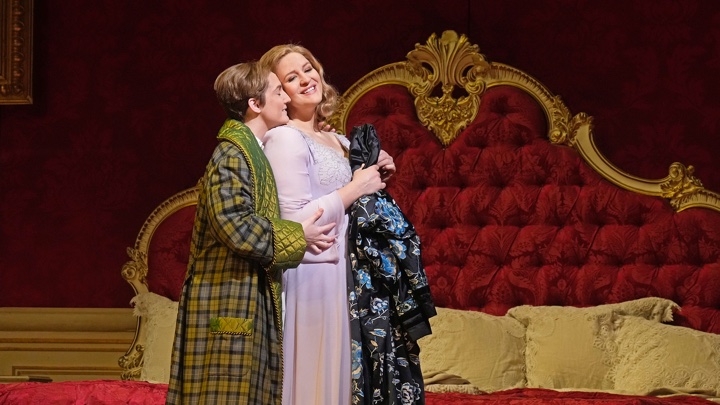
Makes sense, right? Well, yes and no. It certainly lends itself to sumptuous interiors and gorgeous costumes, including resplendent uniforms for Octavian and Baron Ochs, who here looks less like a bloated nobleman and more like a swaggering military peacock. And of course, the theme of Rosenkavalier—a gorgeously rich tapestry which unfurls as we see an old world give way to a new one—is a metaphor for a seismic change in the early 20th Century that gripped many artists (think of Schoenberg, Mahler, Berg, and so many more).
In librettist Hofmannsthal’s setting, the 18th century serves as a layer, a metaphor. We understand the cyclical nature of shifting time, fortunes, and political control; we see that what happened 200 years before was, in some fundamental sense, happening again. The time period meant enough to the team that they used it also as a layer in Ariadne auf Naxos (and Strauss with librettist Clemens Kraus used it again later in Capriccio).
What Carsen does is essentially to plane away the multiple resonances of Rosenkavalier’s libretto into a single one. It’s reductive, but hardly the most egregious gaucherie in a show that over three long acts goes from simplistic to disastrous.
SInce the co-production landed at the Met in 2017, much ink has been spilled over Act III in particular, where Hofmannsthal’s rather traditional if noisy tavern here becomes a lurid whorehoue and strip club. But even dumber misreadings occur throughout.
The end of Act I with its heartstopping postlude is meant to leave the Marschallin alone in silent contemplation; instead, Carsen has her heading out to start her day. Act II begins with an enormous cannon rolled onstage. (Yeah, Ochs is obsessed with his potency—we get it.) Moments later, what appears to be a road company of My Fair Lady is mystifyingly playing upstage. Even the iconic silver rose itself is tacky, looking more like a rhinestone lawn ornament.
Fortunately, the musical side is also “ein anderer Ding.” The current Met revival, while not perfect, has much to feel joyful and excited about.
Samantha Hankey stepped in as Octavian rather late in the day (replacing the originally announced Isabel Leonard). Hankey’s lustrous, darkly-colored mezzo easily traversed every aspect of this often high-lying role (truly, I think the writing is more soprano than mezzo) with impeccable grace and class. She came to vivid comedic life particularly as Mariandl in Act III—a device I often find tedious—was suddenly delightful. She can, and I’m sure will, find more aristocratic bearing in the rest of the role (and in another production where she’s not stuck in a nightshirt for much of Act I), but Hankey deserved the triumphant applause she received at the final curtain.
So did Lise Davidsen in her role debut as the Marschallin, though here too I think there’s room for dramatic growth. The thrill of Davidsen’s amber-colored soprano, an absolutely even column of sound with Niagara-like power, is its own reward. But here, in a role that generally wants something more delicate, she was also able to refine that sound with no loss of color or support. If some of the key phrases (“da drinn ist die silberne Ros’n” at the close of Act I) didn’t quite float, they were genuinely pianissimo. And Davidsen cuts a sympathetic figure on stage.
What’s not quite there yet—and important for a Marschallin—is a Lieder singer’s specificity with text, as well as the quicksilver changes of mood that mark a truly great interpreter in this role. But there’s every reason to think these will come with experience.
Erin Morley’s Sophie, familiar at the Met, was charming and exceptionally well-sung, though the timbre is a bit more soubrettish than I’d like. Baritone Brian Mulligan was a vocally and dramatically refulgent Faninal, and good supporting work was done by Katharine Goeldner (Annina), Thomas Ebenstein (Valzacchi), and Alexandra LoBianco (Marianne Leitmetzerin). René Barbera sounded secure but small-scale as the Italian Singer; he’s also ill-served by the silliness of Carsen’s conception here.

Conductor Simone Young, back at the Met after more than two decades, gave a curious reading of the score, sometimes propulsive and lacking in Romantic sweep. Effective in moments, it lacked cohesive shape, and frankly it was not the orchestra’s finest hour either. It can’t have helped the the evening began with a worrying power failure that got things off to a late start. But when there was light… there was light!
Photos: Ken Howard / Met Opera
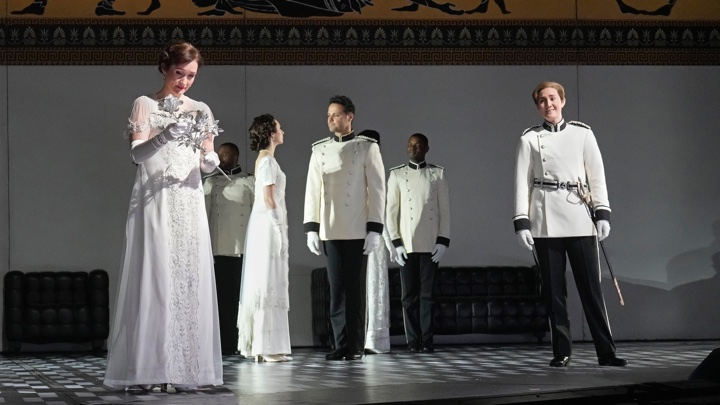

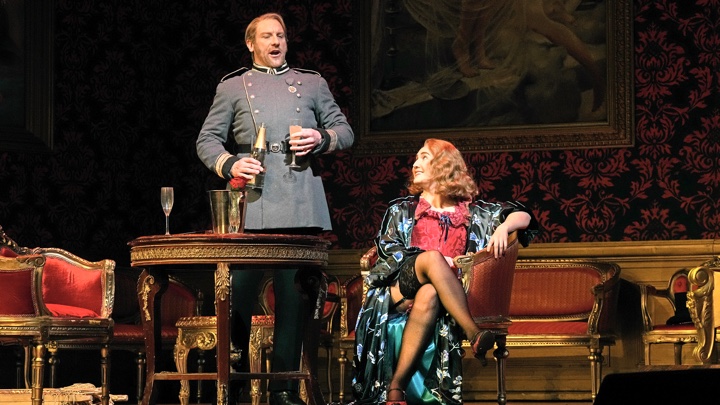
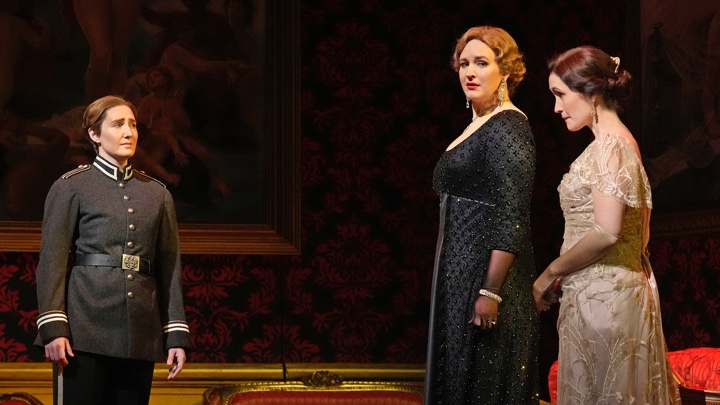

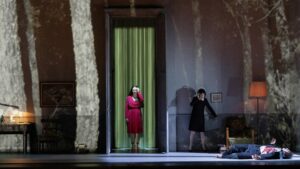
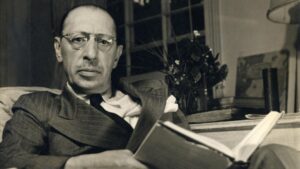

Comments